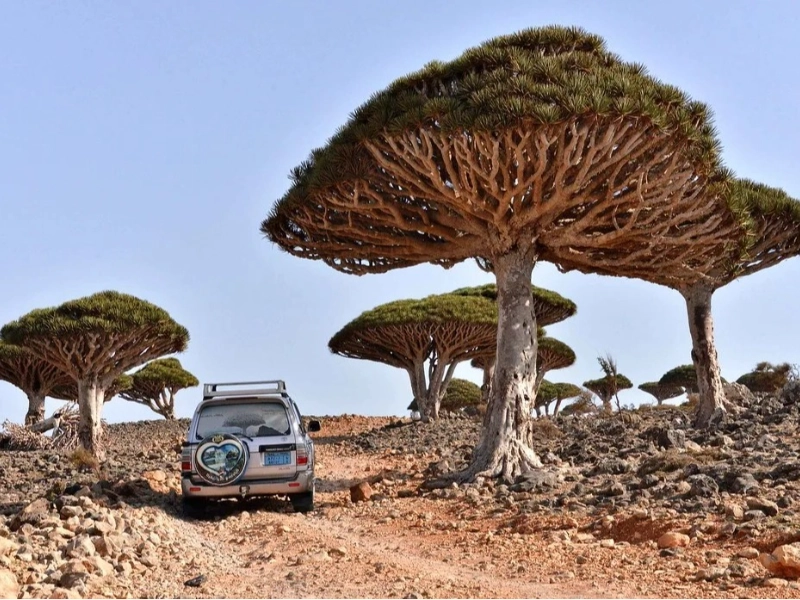10 Geological Oddities That'll Blow Your Mind (and Maybe Your Geography Teacher's Too!)
Advertisement
2. Socotra Island: A Living Laboratory of Evolutionary Marvels

Advertisement
Nestled in the Arabian Sea, almost 250 kilometres off the coast of Yemen, Socotra Island is a place so unusual and otherworldly that it has sometimes been referred to as "the most alien-looking place on Earth." Comprising four islands with Socotra the largest, this remote archipelago is evidence of the power of solitude in driving evolutionary processes. Separated from mainland Africa for at least 6-7 million years, Socotra is a living laboratory for researchers and a wonderland for anyone fortunate enough to walk on its coastlines. It has evolved an amazing assortment of indigenous vegetation and wildlife.
Certainly the most famous resident of the island is the Dragon Blood Tree (Dracaena cinnabari), a species so odd in look that it seems to have erupted from the pages of a science fiction book. Perfectly suited to Socotra's arid environment, the Dragon Blood Tree boasts an umbrella-shaped canopy atop a small, gnarled trunk. Its dense crown decreases evaporation and offers shade; its upturned limbs effectively transport any moisture from fog or light rain straight to the trunk and roots. The dark red sap of the tree gets its name from centuries of prized use as a dye and therapeutic agent. Trading this "dragon's blood" widely, ancient Greeks, Romans, and Arabs helped to explain Socotra's historical significance as a trading station.
Another of Socotra's native wonders is the equally beautiful Bottle Tree, sometimes known as Desert Rose (Adenium obesum socotranum). This odd plant survives the island's long dry seasons by storing water in its bulbous trunk. Its bloated base can reach three metres in diameter, tumbling to thin branches covered in vivid pink blossoms. The harmony between durability and beauty that defines most of Socotra is aptly embodied in the contrast between its corpulent trunk and delicate blooms.
Still another botanical anomaly absent anywhere else on Earth is the Cucumber Tree (Dendrosicyos socotranus). Being the only known tree-like species in the cucumber family, it is evidence of the evolutionary experimentation seclusion may encourage. Its strong, water-storing stem and sparse, large-leaf- tipped limbs make it very different from its more common cucumber cousins. One excellent illustration of how plants could adapt to occupy ecological niches in isolated surroundings is this departure from the usual morphology of its family.
The island of Socotra boasts around 700 endemic species of plants, so they are not restricted to these well-known specimens; they are found nowhere else on the earth. With over 37% of its plant species unique to the archipelago, this amazing degree of endemism places Socotra in the company of well-known evolutionary displays like the Galápagos Islands. From limestone plateaus and sand dunes to granite mountains, the island's varied landforms have produced a range of microclimates that have let for this amazing diversity of plant life.
Advertisement
You May Like

